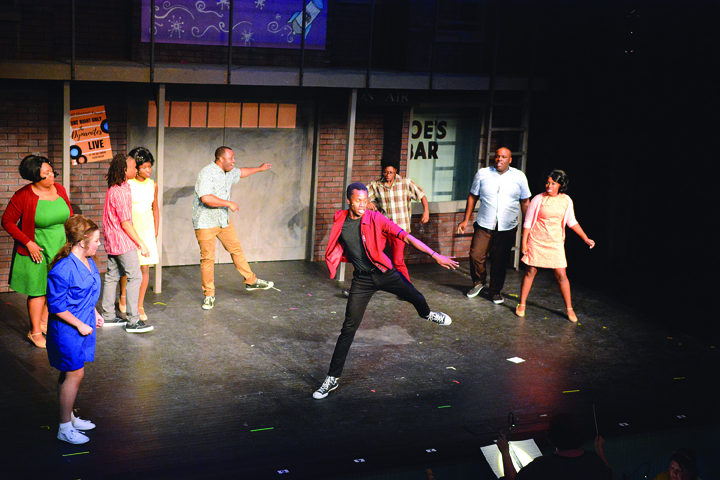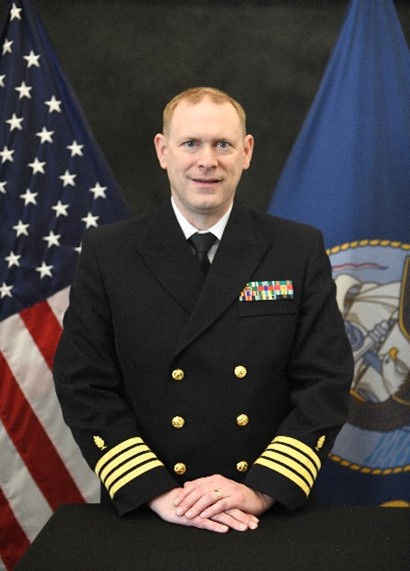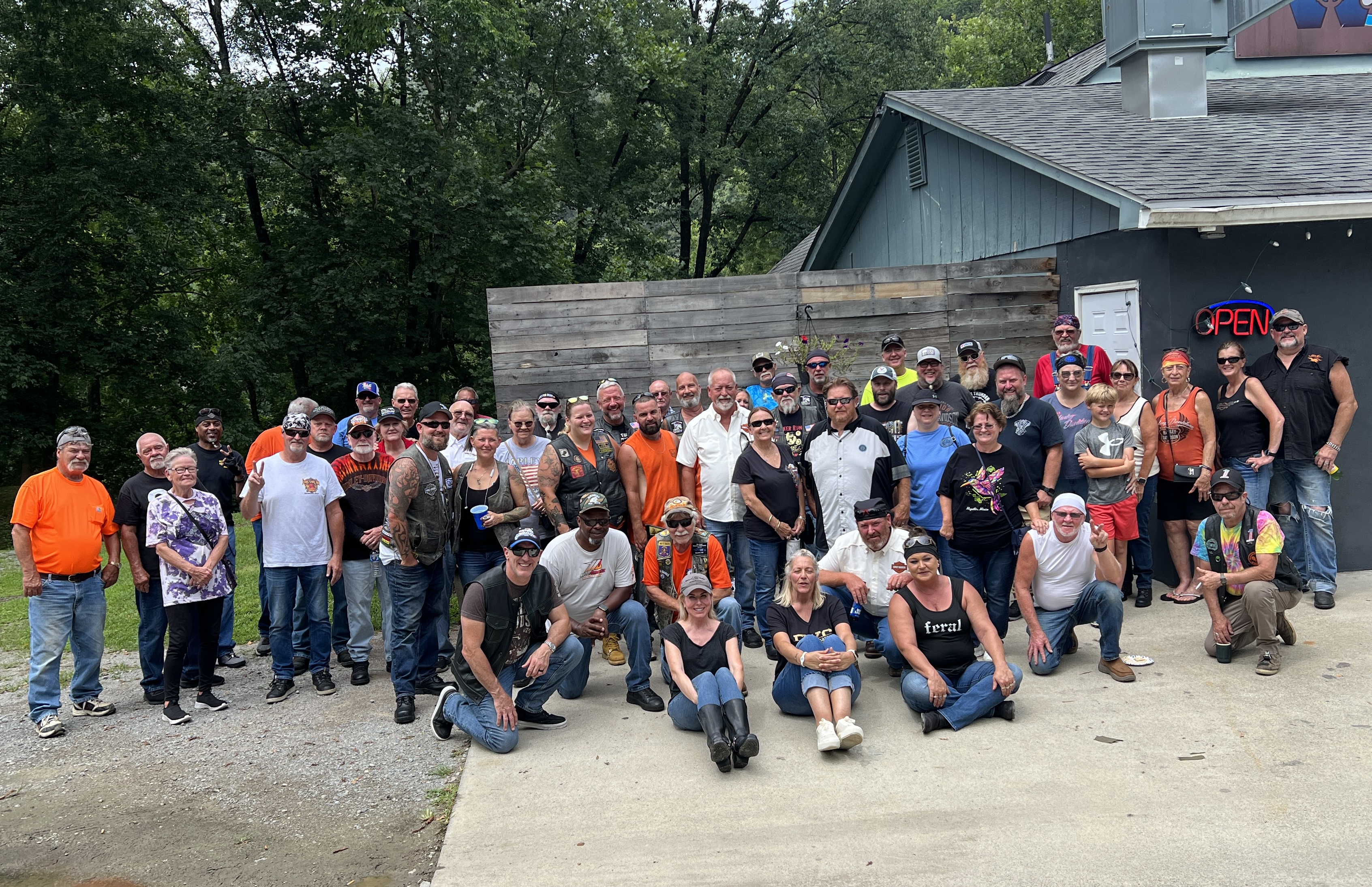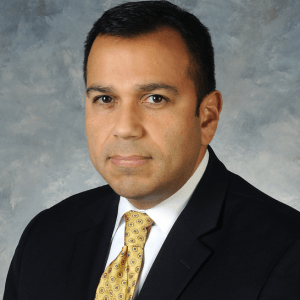Closer Look: A space for everyone
Published 9:50 am Tuesday, November 26, 2019

- Seaweed Stubbs (Jalam Sutton) leads the stage in a musical number during "Hairspray" at Leeds Center for the Arts. (Photo by Seth Littrell)
It has been nearly three years since the release of The Harwood Institute report, “Waving the Community’s Flag,” an in-depth look at how community members view Winchester and Clark County.
At that time, residents talked about their love for Winchester and Clark County, hailing it as a great place to live, filled with a spirit of generosity, small-town atmosphere and rich history. But they also described looming challenges and a great division among its people.
Now, in 2019, The Harwood Institute is back. In late October, it released “One Step At A Time,” a progress report highlighting the many stories of action now taking root and the spreading of new productive ways of working together in the community.
Trending
The Sun is highlighting these stories to take a closer look at the Clark Countians behind the progress toward a better community for all. This week, in part four of the series, The Sun looks at how some community members have stepped up to focus on diversity, equity and inclusion.
Making access to health care equitable for all
Candice Tackett, director of growth and outreach at Clark Regional Medical Center, attended the Public Innovators Lab in 2017.
Tackett, whose background is in behavioral therapy, had lived in Winchester for two years at the time but hadn’t felt a sense of belonging, according to the “One Step At A Time” report.
During the lab, Tackett identified a form of exclusion: professionals who make decisions without talking to those they directly affect.
In the first month after the lab, she held four community conversations with patients, staff members and community groups affiliated with the hospital, according to the report.
Trending
The most evident finding from the community conversations was people not feeling understood — literally.
Spanish speakers had a difficult time communicating with CRMC admissions personnel, nurses and doctors, making everyone feel uncomfortable.
One example, outlined in the report, is a Hispanic man who suffered a heart attack. When he arrived in the emergency room, he experienced heightened anxiety because of the language barrier, which created a vital lag time in administering the treatment he needed.
Stemming from those conversations, CRMC made its translation services more visible and accessible to patients, and CRMC translated admissions and other forms into Spanish. Some hospital staff later approached Tackett with additional ideas for the hearing-impaired and patients with other disabilities.
CRMC also purchased a text-enabled telephone, added 12 new accessible parking spaces and a new motorized cart helps patients get from the lobby to different hospital departments, according to the report.
Comments about the lack of racial and ethnic staff diversity also surfaced during the community conversations.
Tackett realized the hospital was behind the curve in its staff diversity. The hospital then hired new staff members to close the gap.
CRMC’s staff now better represents the area’s population, which is 10 percent minority, according to the 2010 Census.
Tackett looked at the composition of her Patient Family Advisory Board, which is a group set up three years earlier to report on patient issues to the hospital board. It was mostly white and middle-aged, according to the report.
So, she added two people in their 20s and committed to adding high school students and people of color.
CRMC also implemented a Skype-based translation system called IRIS that handles a total of 200 languages. This effort started with a single iPad on wheels, and then expanded to four throughout the facility for staff members to use when speaking to people with different languages.
The use of IRIS spread to about two dozen of CRMC’s clinics throughout the region, and then some doctors with hospital privileges began using the system in their private clinics.
Bringing inclusivity into the arts
In the weeks following the Public Innovators Lab, Tracey Miller, executive director of Leeds Center for the Arts, spotted a pick-up truck sporting two Confederate flags when leaving lunch downtown with friends.
This incident sparked a new programming idea: mount a production of “Hairspray.”
Frequently viewed as a “bubble gum musical,” according to Miller, “Hairspray” has a lot of poignant things to say about race.
The cast included several young people, so this was also an opportunity to engage local and regional students and adults in the production, according to the report. In addition to regularly scheduled performances, the students also performed a few numbers outdoors for the community.
Miller also added a new feature for Leeds: a post-performance discussion about the play’s themes led by Pastor Marvin King, a prominent African American pastor at the First Baptist Church.
The play became a chance to openly highlight and discuss underlying issues of race in the community, while also making students more visible, according to “One Step At A Time.”
In a letter to the editor dated Aug. 23, 2017, the late Graham Johns shared with readers how he had grown up in Winchester in the 1950s, when black people sat in the balcony and white people sat downstairs at Leeds.
“To see so many people of different races sitting downstairs brought tears of joy to my eyes and put a lump in my throat,” Johns wrote.
That performance led to black residents gradually attending more performances at the theater, which was once segregated, according to the report.
Now, 30-to-40 percent of the students who audition for Leeds’s popular youth productions are African American.
Miller also partnered with King to offer improv classes for children in his church’s reading readiness program, designed to boost self-esteem.
However, according to the report, attendance was low, and only children from the church go.
According to the report, Miller and King saw a need to forge more black-white connections among youth.
Inspired by the positive results from “Hairspray,” Leeds presented “Outside Our Doors” the next year.
Leeds received a What’s Your Ambition?! grant from The Greater Clark Foundation to write and produce the drama.
The Leeds Youth Advisory Board worked with a playwright to bring to the stage the distressing words of local African Americans, gay men and women, individuals suffering from addiction and survivors of family violence.
The play challenged Winchester residents to see and hear community members from all walks of life, according to the report.
Students involved in that play were then inspired to volunteer. Some students expressed an interest in helping King’s First Baptist Church with its summer movie series, according to the report.
The theater is also booking more performers who appeal to the African American community, including a gospel group during the annual Pioneer Festival. And Leeds brought Linkin’ Bridge, a popular Louisville a cappella group made famous by an exceptional run on “America’s Got Talent,” to perform at the theater and the high school.
Better together
The “Race and Class group,” which formed out of the Public Innovators Lab, had their first meeting in May 2017 where members of Emmanuel Episcopal Church, who had participated in a Lenten Study examining racism, joined.
From there, their passion for improving Winchester only strengthened. The group has been meeting about twice a month for nearly two years during which they share perspectives on various issues in their “safe space.”
In its initial start, the group wanted to find a more inspiring name, especially with Leeds’ production of “Hairspray” coming up, and with group member Pastor Marvin King playing a vital role in the production.
Team members felt “Race and Class” didn’t do justice to their mission of seeking greater diversity and inclusion in Winchester and Clark County, according to the report.
The new name they chose was the Multicultural Alliance.
Then, after a year of working together, the team began to see themselves as something more: connectors.
They aspired to shift the spotlight to people not typically seen or heard in the community, help them become more visible and build greater relationships between and among different groups in the community.
The team then decided to change its name once more, to Better Together Winchester, or BTW. The new mission statement makes BTW’s intentions clear: “As a path to positive change, Better Together Winchester will facilitate opportunities for civil engagements that build inclusive relationships and foster equity and a sense of belonging across our community.”
As the team’s sense of purpose evolved, BTW’s white members were increasingly examining their assumptions and attitudes on race, according to the report.
They looked to King to lead them in a process of self-examination. He declined.
He explained white people frequently turn to African Americans to educate them about race.
King instead provided the team with a reading list to pursue on their own, according to the report.
What followed was a series of uncomfortable conversations about whites’ collective position of privilege and power that the team members themselves needed to reckon with — to name, to acknowledge, to own.
Member Mark McCammish previously told The Sun the group started out talking about racism but began to realize it’s also an issue of economic disparity. McCammish, who joined the group from Emmanuel, said he learned two things: First, black folks can’t end racism. Only white folks can do that. Second, the best place to do that is in a faith setting.
Members of the group also decided to go together on periodic lunch dates, so blacks and whites in town see them socializing in public — a rarity the members wanted to change, according to the report.
In another step to move its mission forward, BTW decided to sponsor a candidate forum to give voters greater access to those running for office.
As news of the event spread, the public innovators started to feel pushback from the established “old guard” about their intentions, according to the report.
Questions arising from the “Waving the Community’s Flag” report drove the forum, while organizers also asked residents to submit questions. The questions were given to the candidates in advance as a signal BTW expected thoughtful answers. Topics included substance abuse, code enforcement, economic disparity and equal opportunity to community services.
Coming off the success of last year’s forum, BTW returned this year to host a town hall in October.
Dozens attended the two-hour long town hall and asked questions revolving around race. BTW member Becky Farmer previously told The Sun the forum and the town hall were only the beginning of the many opportunities BTW will provide for the community to convene for discussions.
“We need to have multiple opportunities to talk about what’s happening… how to make positive change and do it together… to be better together,” she said in an interview.
Diversity, Equity and Inclusion
In 2019, after the candidate forum, another partnership involving race and diversity started to bubble up.
The idea came from Jennifer Gulley, the nurse administrator with the Clark County Health Department, who attended an implicit bias workshop in Lexington, according to the report.
With public health accreditation and staff training needs in mind, she was there to audition the training as well as the trainer.
The experience impacted Gulley, and she believed Winchester could benefit from the training and the instructor, Pastor Edward Palmer, a certified diversity trainer from Radcliff, according to the report.
She contacted Kelly Hutchens from Better Together Winchester, whom she got to know in the run-up to “Outside Our Doors,” and the women meet with Linda Barrett from The Greater Clark Foundation and Candice Tackett from Clark Regional Medical Center.
As with other efforts, this one also involved a cross-section of individuals and teams from the public innovator network.
When the four women met, they talked about doing a single event. But when they took the idea back to their respective organizations, something even more ambitious evolves: support for a collaboration on a longer-term learning journey.
Working with Palmer, the group divides the training into four distinct parts, extending the workshops throughout 2019. The first two meetings covered implicit bias and avoiding cultural collisions. The next two focused on understanding race and systems of racism and how to apply the training to peoples’ work and lives.
The partners also scheduled multiple meetings for each training topic; this way, they could draw in as many residents as possible and help the community surface, discuss and act on its class and racial divides.
Hundreds of people attended the workshops, which wrapped in early November.
Of Thee, I Sing
Another ripple focused on inclusion and belonging that came to Winchester was the public art display, “I Was Here.”
The display features 23 “Ancestral Spirit Portraits” that create memorials to those who were sold into slavery and engaged people to think beyond ‘who we were’ into a vision of ‘who we could be’ as fellow citizens, according to the report.
The collaboration between artist Marjorie Guyon and photographer Patrick J. Mitchell made its debut in Lexington near the site of one of America’s largest slave markets, and Winchester is the first community to host the traveling exhibition.
The large portraits cover downtown windows to call attention to Winchester’s history of slavery and its current racial divides.
BTW members, other public innovators and community residents all took part in an “on-the-street museum walk,” which culminated in a community conversation at Leeds.
Clark County’s history with slavery also inspired an offshoot of “I Was Here” called “Of Thee, I Sing.”
Clark County residents — rich and poor, black and white, city and county — became Hannah and Daniel, an enslaved woman and her bi-racial son who was sold at the age of 7 on the steps of the Clark County Courthouse.
Their collaged portraits helped people to re-see themselves and their neighbors through a lived experience of empathy and compassion, according to the report.
“Of Thee, I Sing” moves beyond the story of Daniel and Hannah into a depiction of who people could be … of how people can begin to “see ourselves and each other differently,” Guyon told the crowd at the reveal in October.
The Greater Clark Foundation, Clark County Community Foundation and Wells Fargo funded the initiative. The three organizations had not formally worked together before.
The images of “Of Thee, I Sing,” are now on display in The Gallery at the Opera House.
The artists will replicate each original as a piece of public art they will install in locations throughout Clark County in 2020.
King told the crowd at the reveal he hoped the community learns from the “Of Thee, I Sing” exhibit and taps into what makes Clark County so special.
“When we look around this gymnasium, when we celebrate the artistic expression, what I want us to leave here saying is: We are better together,” King told the crowd at First Baptist Church on Highland Street.







